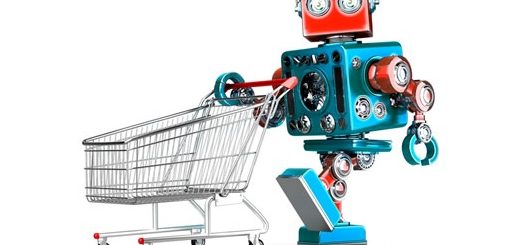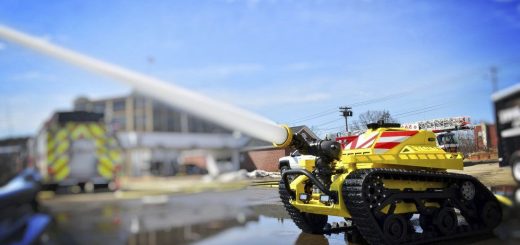Robotic surgery cons, pros, uses and How does robotic surgery work?
Robotic surgery offers many benefits to the patients compared to open surgery, It reduces pain and discomfort, It causes faster recovery time and the patient can return faster to normal activities, It reduces blood loss and transfusions, It offers smaller incisions, resulting in reduced risk of infection, It presents minimal scarring and shorter hospitalization.
What is Robotic Surgery?
Robotic surgery is the latest evolution of minimally invasive surgical procedures, During surgery, three or four robotic arms are inserted into the patient through small incisions in the abdomen, One arm is a camera, two act as the surgeon’s hands, and a fourth arm may be used to move obstructions out of the way.
The patients are surrounded by a complete surgical team, while the surgeon is seated at a nearby console, The surgeon uses a viewfinder that offers a three-dimensional image of the surgical field, the surgeon’s hands are placed in special devices that direct the instruments, Robotic arms filter out any tremors in the physician’s hands & increase the physician’s range of motion, This enhanced precision is helpful to the surgeon during delicate portions of procedures.
Robotic surgery is ideal for those more complex & difficult to access surgeries, Within the specialty of general surgery, its application is widely developed in oncological surgery of the rectum & esophagus-gastric and also, in other procedures such as surgery for morbid obesity and pelvic floor.
It is an advanced form of minimally invasive or laparoscopic (small incision) surgery where surgeons use a computer-controlled robot to assist them in certain surgical procedures, The hands of the robot have a high degree of dexterity, allowing surgeons to operate in very tight spaces in the body that would otherwise only be accessible through open (long incision) surgery.
Robotic surgery pros
Robotic surgery offers small incisions, less trauma to the body & greater surgeon precision & enhanced dexterity, It is more precise due to better visualization of the surgical field, correction for tremors in hand movements, and greater maneuverability of instruments, Robotic surgery reduces the recovery time to the patients, So it is an excellent choice for the individual.
The robotic and minimally invasive surgery results in smaller incisions, So it causes less pain & scarring than open surgery (traditional surgery with incisions), It helps surgeons perform complex surgical tasks through tiny incisions using the robotic technology, It is a self-powered, computer-controlled device that can be programmed to aid in the positioning and manipulation of surgical instruments, It provides surgeons with better accuracy, flexibility & control.
In the case of performing robotic surgery using the da Vinci Surgical System, The surgeon works from a computer console in the operating room, controlling miniaturized instruments mounted on three robotic arms to make tiny incisions in the patient, Where the surgeon looks through a 3-D camera attached to a fourth robotic arm, that magnifies the surgical site.
The surgeon’s hand, wrist and finger movements are transmitted through the computer console to the instruments attached to the robot’s arms, The mimicked movements have the same range of motion as the surgeon allowing maximum control, and The surgical team supervises the robot at the patient’s bedside.
Robotic surgery increases accuracy, It is not subjected to involuntary movements of the surgeon, It can access the cavities & the areas of difficult access improvement, due to the robot instruments size, the doctor adapted to the technology, and will do a better job and will have greater control over the operation, The robotic surgery has HD equipment that can increase the visual ability of the physician.
Robotics offers precision, reliability, high performance and speed during surgical interventions, The equipment and systems that have robotic technology can withstand large doses of radiation, Robots do not experience fatigue or tremor, so they can do their job over & over again, Video cameras can be added to the robotic equipment, with which they obtain recordings of the work carried out.
Robotic surgery facilitates non-massive surgical interventions, Surgical operations can be carried out from different parts of the world, The surgeon can manipulate the robot from a centralized distance, the surgery can be performed in a less restrictive manner, So, the patient can be treated & operated on with a minimum of staff that can reduce costs.
Surgeons can perform surgery from a distance benefits the quality of health care for the patient as they can enjoy the reduction in costs, as well as a greater degree of flexibility regarding the areas they can be treated, Robotic surgery offers a high accuracy to surgical procedures such as the orthopedic surgery, or neurological.
Doctors may be tired which in turn, reduces their concentration & ability to focus, The surgeon who works several hours without a break will find that he will struggle to hold the scalpel steady, Robotic surgery reduces, and even eliminates strain on the surgeon.
Robotic surgery offers minimal body invasion, as the tiny instruments attached to the robotic arms in the surgical equipment enter the deepest body tissues or the internal most portion of the body with just small incisions, quick recovery is achieved from robotic surgery, There is no risk of growing big scars after the surgery, This is the best cosmetic benefit coming from the robotic surgery.
The surgeons do not need to bend a lot to perform the surgery on the operation table, they can be in front of the magnified screen with 3D images of the internal body portions where the surgery needs to be performed, Many surgical successes have been seen through robotic surgery in the treatment of Prostate cancer, removal of Gallbladder and heart valve operations.
Cons of robotic surgery
The surgical procedure using high-tech equipment can increase the costs of the operation and treatment, The inexperience of the doctor, when working with electronic equipment causes a risk, there may be some inconvenience in the programming of the system or a failure in any of the equipment, So, The surgeon should have an expert in advanced medical equipment.
Every year new technological devices appear that surpass in quality to the previous ones, improving the experience of the users, medical equipment can fall into obsolescence quickly, this will imply a constant renewal of the apparatuses, and increase the cost remarkably, Robotic surgery is expensive both in terms of capital costs, as well as running expenses and will require the training of specialized personnel to repair and care for it.
The main problem with Robotic surgery is the high cost of the equipment and its maintenance, So obtaining a high price for treatments or operations, The difficulty in the programming of the systems and equipment, requires information that is geometrically difficult to express linguistically, Like all technological equipment, The machines and robotic systems will be considered obsolete because it will be replaced by another more.
Health issues involved with such surgical treatments include patient injury & harm or death during the procedure, Many complications are influenced by the patient’s health when treated by robotic surgery, Robots arms used for performing robotic surgery are made up of tough plastics, It has been noted that tear in this plastic tip causes the electrical arching that causes severe injury in the patients during surgery.
The main limiting factor that is stunting the development of robotic surgery is latency which is the time delay between the instructions issued by the surgeon and the movement of the robot that responds to the instructions, With the current level of technology, the surgeon must be nearby.
The importance and uses of robots in medicine
Laboratory robotics uses, advantages and disadvantages
Computers in Medicine uses, advantages and disadvantages
Surgical robot types, advantages, disadvantages, How is robotic surgery different from traditional
Robotic Surgery vs. Laparoscopic Surgery, Robot-assisted surgery features, benefits & drawbacks













